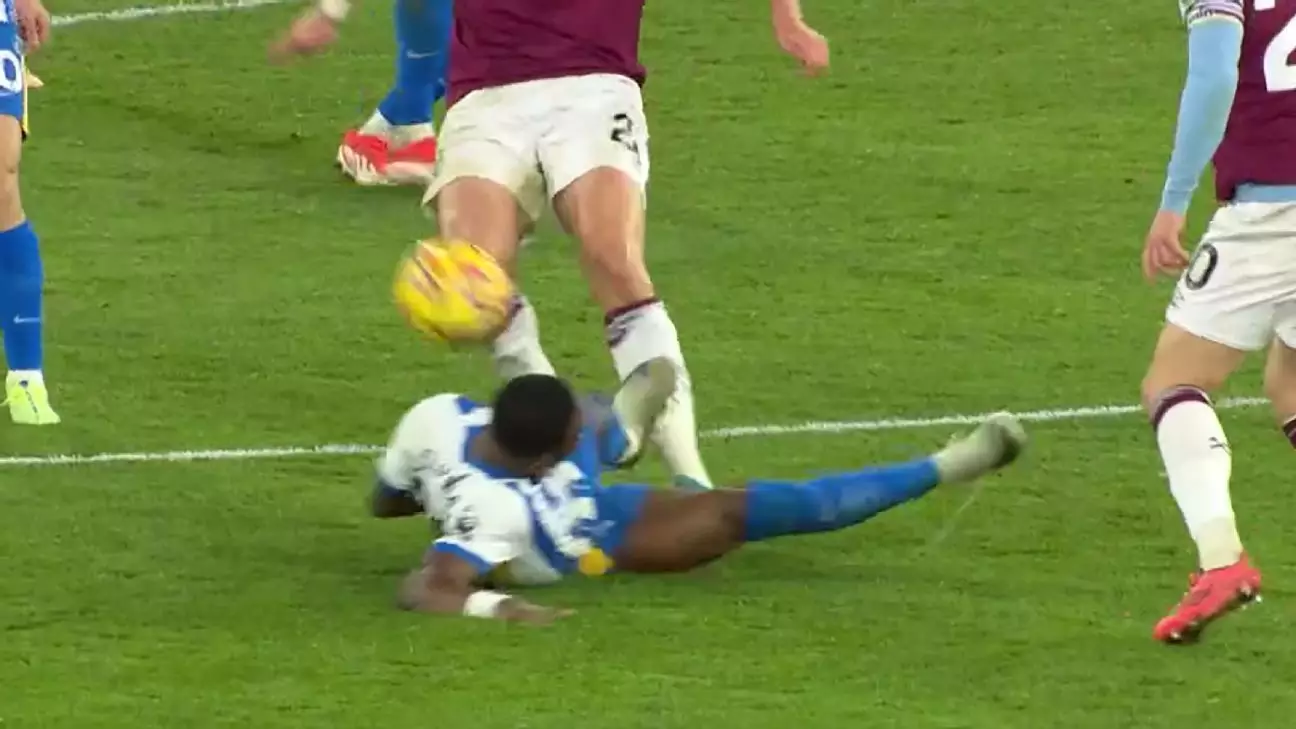The introduction of Video Assistant Referee (VAR) technology in the Premier League has sparked a significant amount of discourse spanning various levels of insightful critique and fervent frustration. While VAR was conceived to enhance the accuracy of officiating, its implementation has often brought more challenges than solutions. The essential question remains: how are pivotal decisions made, and amidst ongoing controversies, are these decisions justifiable?
VAR’s primary objective is to reduce glaring mistakes in key match decisions, particularly regarding goals, penalties, direct red cards, and mistaken identity. When a questionable incident arises, a designated VAR official reviews the footage in real time—assessing it against the protocols outlined by the Laws of the Game. However, the interpretation of fouls and offenses can vary, leading to divergent opinions among fans, players, and analysts alike.
The discussion surrounding VAR decisions is often steeped in controversy. Take, for instance, the compelling case of Brighton & Hove Albion’s defender Pervis Estupiñán during a match against West Ham. Estupiñán was shown a yellow card after a challenge that many observers felt warranted a red card for serious foul play. The VAR review confirmed the initial decision made by referee Rob Jones, but why was a more severe penalty not issued?
The crux of the contention lies in the assessment of what constitutes serious foul play. League directives encourage a level of physicality in matches, which complicates matters of interpretation. Across various incidents, including those involving prominent players such as Manchester United’s Bruno Fernandes and Brentford’s Christian Nørgaard, the missed calls surrounding serious foul play have cast a shadow on the efficacy of VAR.
In the case of Estupiñán, the challenge showcased a disconnect between the referee’s on-field evaluation and the VAR’s review process. Critics argue that the speed of the game, combined with the closeness of the referee, creates blind spots in judgment. Ultimately, it was determined that Estupiñán’s tackle endangered the safety of his opponent—that is the threshold for a red card. Yet, the VAR officials’ inaction raises serious questions about their ability to recognize and act upon such situations.
VAR’s impact is not confined to outfield players. Goalkeepers, often afforded a degree of leniency during matches, have found themselves at the center of controversial decisions as well. The review of Jordan Pickford’s collision with Chelsea’s Malo Gusto highlights how varied interpretations can lead to inconsistent officiating. While Pickford’s actions appeared reckless, leading to a likely case for a penalty and yellow card, the VAR review deemed it a normal challenge.
This inconsistency reflects a deeper issue with how the Laws of the Game apply differently to players in different positions. The leniency shown to goalkeepers in these situations, as evidenced by Pickford’s prior incident with Liverpool’s Virgil van Dijk, raises questions about safeguarding players’ health and the integrity of officiating standards across the board.
The ongoing trend of missed VAR interventions has led to calls for a reevaluation of officiating protocols within the Premier League. With numerous instances illustrating a failure to appropriately penalize dangerous challenges, it appears that the system’s efficacy is not merely a function of technology but also its underlying governance.
Statistical records demonstrate that VAR’s intervention metrics lack consistency. With specific officials like Paul Tierney, who has garnered high approval ratings, still missing critical serious foul play calls, it indicates a broader systemic issue rather than isolated errors. The recurring inability to spot dangerous plays underscores a prevalent reluctance to overrule on-field decisions unless absolutely necessary, resulting in missed opportunities for correction.
As the Premier League evolves, so too must the dialogue around officiating practices. The introduction of VAR aimed to enhance the game’s integrity through improved decision-making. However, as illustrated in various high-profile incidents, this digital tool’s impact suffers from limitations rooted in human interpretation.
Moving forward, it’s crucial that stakeholders in English football—including referees, VAR officials, and governing bodies—engage in constructive discussions geared toward refining not only the technology but the philosophy of officiating. A cultural change is necessary to ensure that VAR serves its core purpose: protecting player safety and maintaining the integrity of the game. The debate surrounding VAR is ongoing, and until a resolution is reached, discussions will persist, driven by the passion and commitment of fans to see the beautiful game played fairly.

